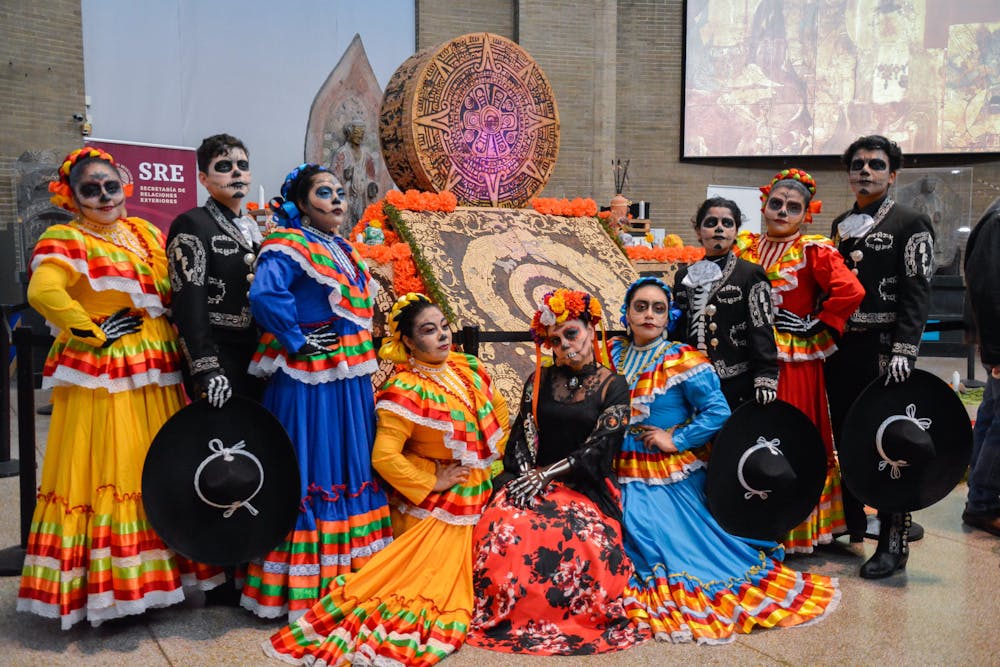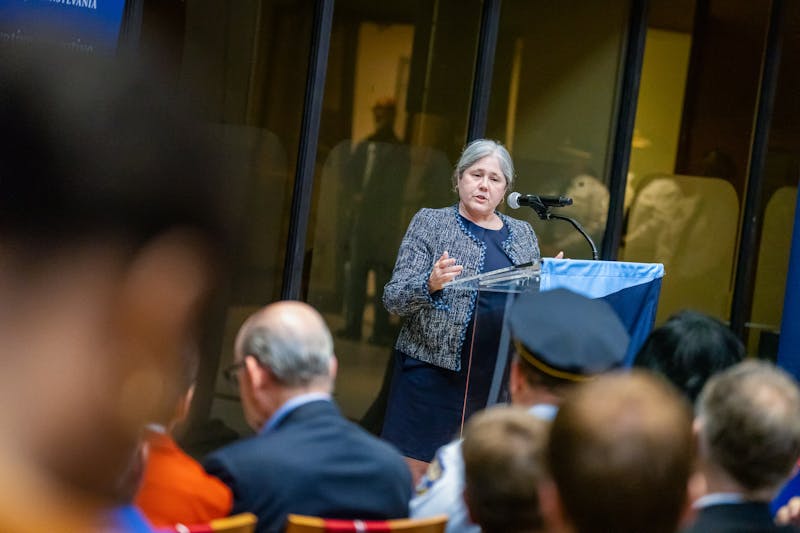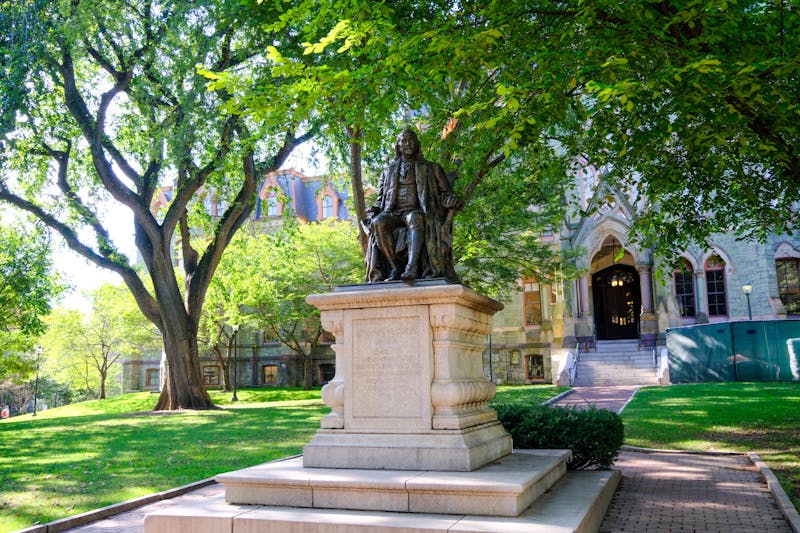
The Penn Museum collaborated with the Mexican Cultural Center to host a celebration for Día de Los Muertos as part of its 12th annual CultureFest! on Oct. 21.
First established in 2011, Penn Museum’s annual CultureFest! invites members of the Philadelphia community to learn about the diverse traditions of different global cultures. The museum’s celebration of Día de Los Muertos, a holiday observed across a vast array of Latin American communities on Nov. 1, aims to illuminate the cultural roots of the holiday.
This year, the Mexican Cultural Center and the Mexican Consulate worked with Penn Museum to organize the Día de los Muertos Festival. The full-day schedule featured art stations, musical and dance performances, altar competitions, and an authentic artisan market. The centerpiece of the event was a display of an altar designed by Ignacio Bernal and Mauro Carrera that featured images of endangered species.
Araceli Guenther, president of the Board of the Mexican Culture Center, wanted visitors to experience different cultural elements that encapsulate the customs and traditions of Día de Los Muertos. She chose Bernal and Carrera’s altar as one of the focal points of the festival to highlight the intersection of contemporary artistry and prevailing tradition.
Guenther said that selecting the altar contest winner was her favorite part of the planning process, although she had a difficult time deciding between the four entries.
“They each in their own way represented the personal style of the artist yet contained all the traditional elements of the altar for the Day of the Dead,” she said. “It was just brought about in different shapes, forms, colors, and sizes.”
In helping plan the event, Penn Museum’s Director of Learning and Community Engagement, Jennifer Brehm, hoped that people would learn how traditional Mexican culture honors loved ones who have passed.
“Especially since the messaging is about honoring those who have passed in these difficult times, this might be a way to have a nice moment and celebrate those who are important to us,” Brehm said.
In addition to displays of traditional Mexican ofrendas, the festival included live dance performances by Danza Los Jolo, Kalpulli Kamaxtle Xiuhcoatl, and Ballet Folklorico Yaretzi, as well as a singing act by Guachinangos. Additionally, vendors gave attendees free samples of pan de muerto and Mexican hot chocolate, two traditional foods typically offered on altars to the deceased.
College first-year Howard Xu said that he attended the festival to meet new people and learn more about Latin American culture. He especially appreciated the vibrant dance performances and the opportunity to speak with the people who designed the altars.
“I think being more adventurous and trying to expose myself to foreign ideas and cultures is very valuable,” Xu said.
Guenther emphasized the importance of building a better understanding of Mexican culture among people who might not be familiar with its customs and traditions.
“We just want to make sure that we propagate and disseminate as much cultural information about our people, our country, and our traditions as we can,” Guenther said. “We feel that we need to reach out to people, not just in the communities that we serve, but also people that live in these areas that have an interest in learning more about the Mexican culture, the Mexican people, our traditions, and what we do.”
The Daily Pennsylvanian is an independent, student-run newspaper. Please consider making a donation to support the coverage that shapes the University. Your generosity ensures a future of strong journalism at Penn.
Donate






